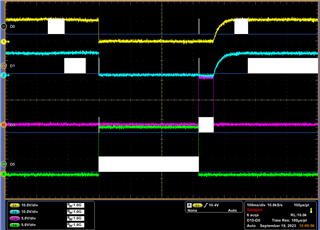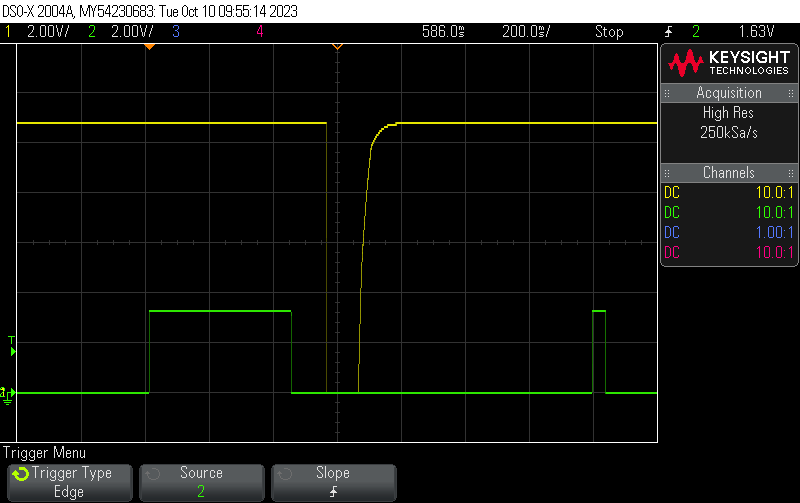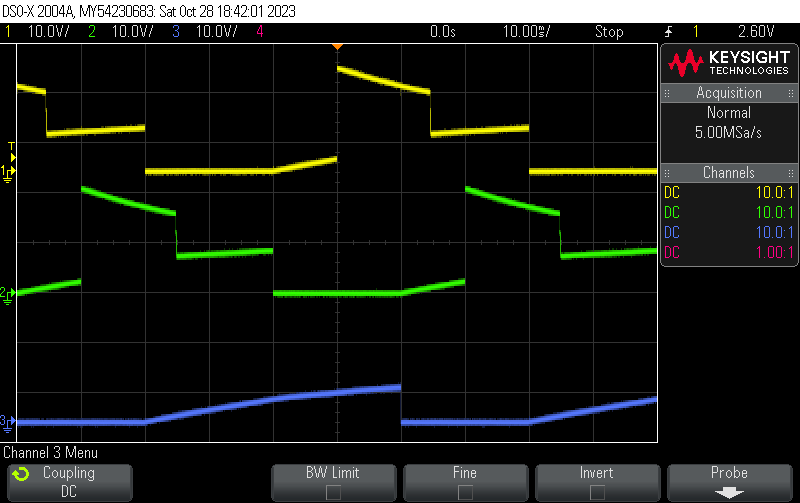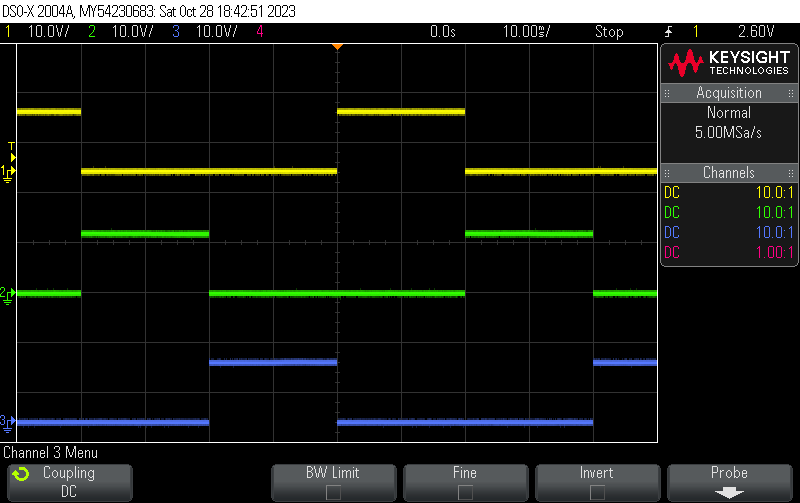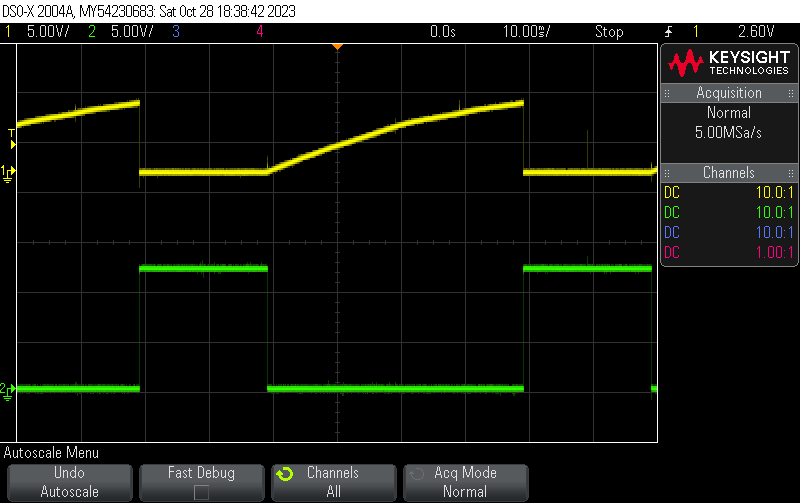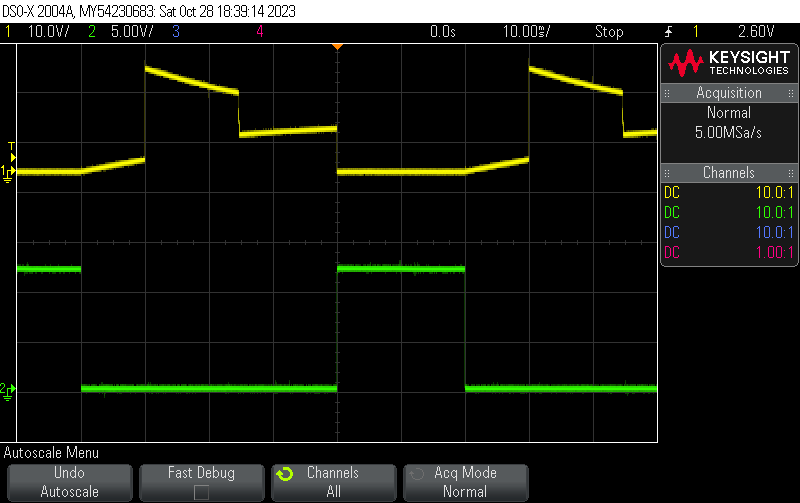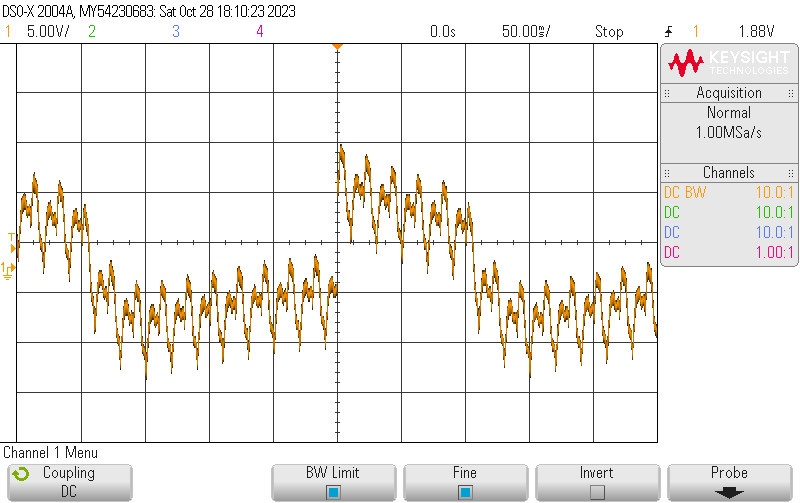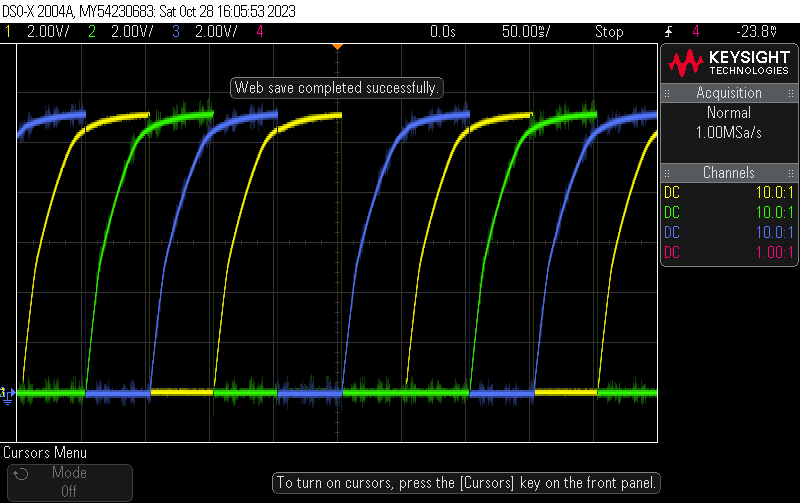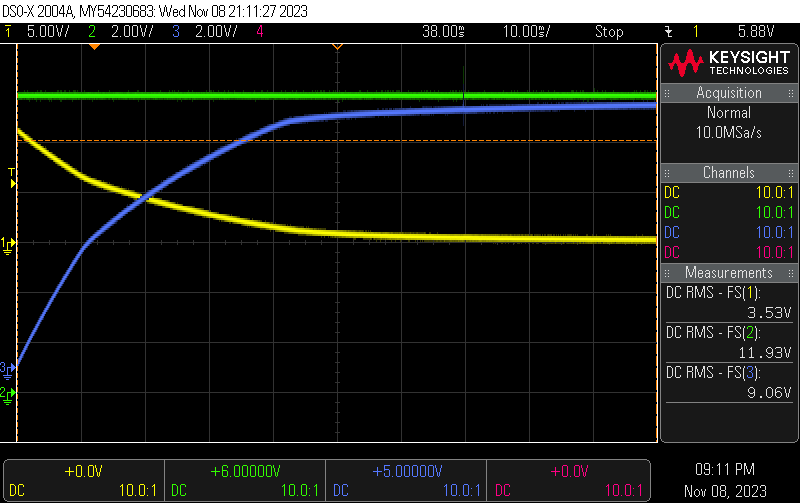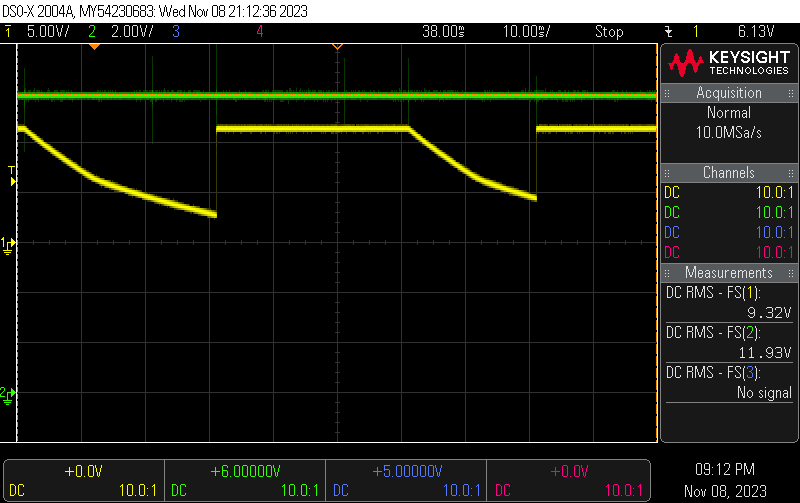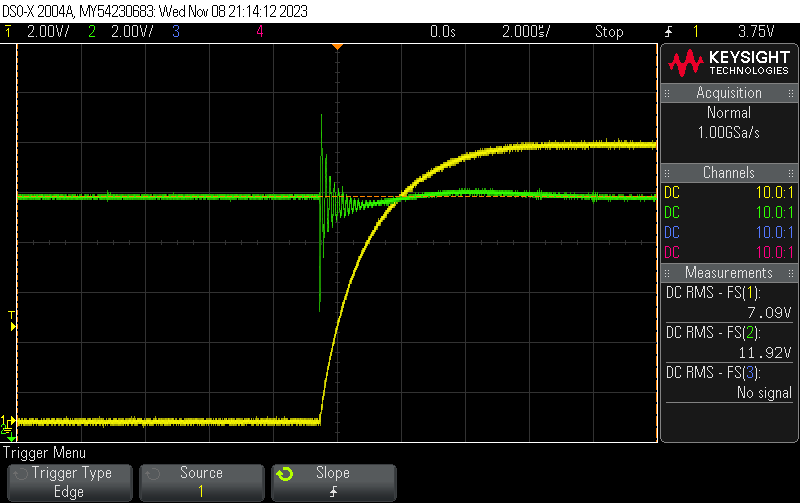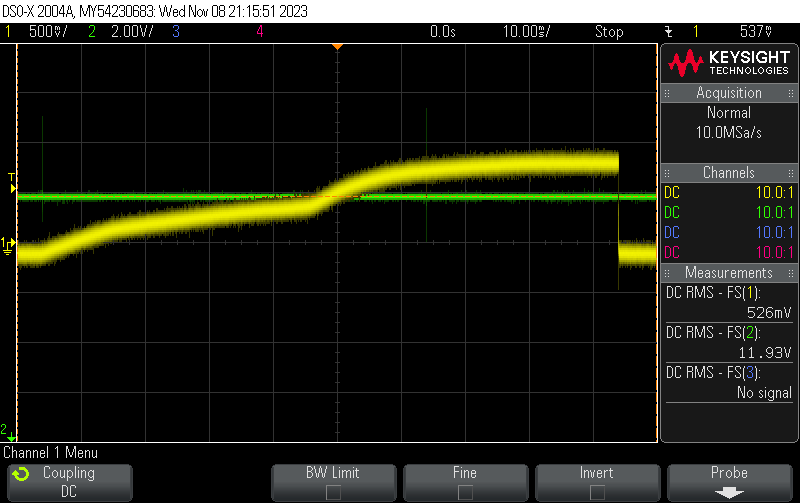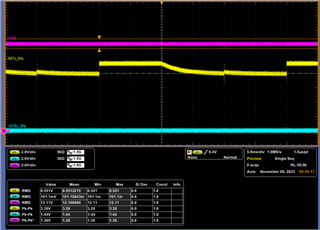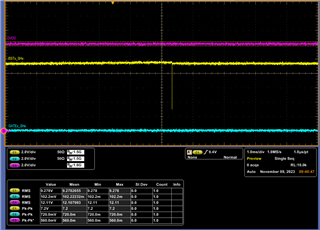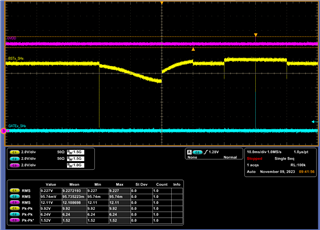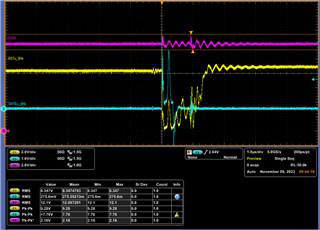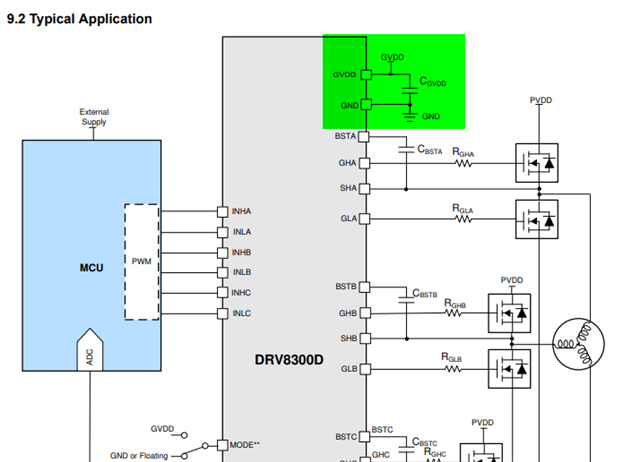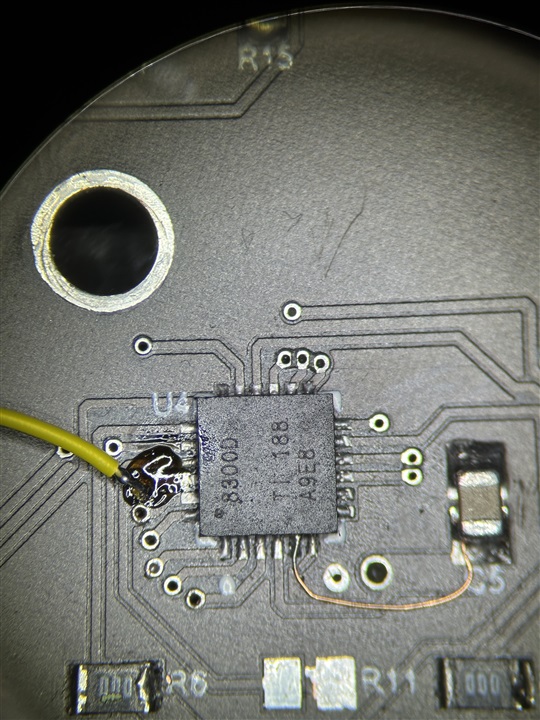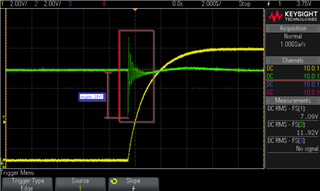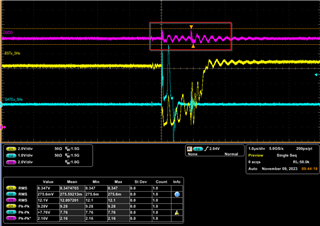Other Parts Discussed in Thread: DRV8313
Hi,
I'm using DRV8300DRGER as gate driver for inverter subcircuit of my BLDC motor controller with 3 pairs of IAUC41N06S5N102ATMA1 N-MOSFETs
I am experiencing some strange issues. I have attached a portion of the schematic and a screenshot from the oscilloscope for reference.
Specifically for 4 channel scope, only two phases have been measured, when driving the IC on Input A and B with low and high sides of the half bridge for BLDC, only the low side of the half bridge gate driving voltage corresponds with the PWM signal from the MCU. The yellow and blue waveforms on the screen (gate a and b on high side of the bridge) are being driven by the DRV8300, but they are not corresponding with the PWM output from the microcontroller. I have tested the code with a different design of the half bridge and it is commutating the BLDC motor without any problems.
The circuit is being tested with a Macon ec max motor and commutation is based on the delivered commutation table and hall sensor input. The PWM is created by an ESP32 WROOM 32E and directly connected to the corresponding inputs of the DRV8300 IC. During the measurement, no additional resistor for dead time was inserted, and standard time was used. No high consumption of the gate driver has been observed, and two replacements of the IC have been retested with the same results. The layout of the PCB and schematic is according to the first release of the datasheet.
For reference, the yellow line of the screencapture represents GHA, the blue line represents GHB, the purple line represents GLA, and the green line represents GLB. Additionally, corresponding PWM signals were captured using digital channels of the scope and an offset has been applied to correspond with phases.
If anyone has any additional information or suggestions, please let me know. Thank you.
